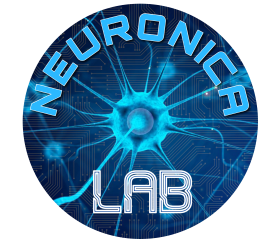NEural MEteo FOrecast
Meteorological weather forecast was always considered as one of the most heavy calculation task for supercomputers arrays. A good system for meteorological forecasting is based on multiple equations systems in order to evaluate data from multiple sources such as satellites ground stations and aerial observations sampled several times a day.
The reason for the complexity of the prevision process resides in the fact that too many variables and events are involved in meteorological forecast. The availability of a high number of parameters allow meteorologists to increase the reliability of their forecasts.
Nevertheless, these systems usually do not provide a reliable local prevision. Micro events at local level (local phoenomena) cannot be “seen” from a system operating on meteorological macro events. Several reasons can be source of anomalies: particular orthographic situations, winds or changes of humidity / temperature in the interested zone.
The meteorological research program NEMEFO (NEural MEteo FOrecast) proposes a completely different approach to the problem. The target of the project is to provide an exclusive local forecast, limited to the zone in which the meteorological system is installed, and for a limited duration in time (up to 3 hours). This approach is very useful for severe problems related to security such as unexpected fog banks on roadways or airports, or ice on roadways or in agricultural cultivations. But also entertaiment activities can take advantage of these tools: knowing in advance the snow situation of a ski track for a contest, rain on the course of a formula 1 contest or on a soccer field are further but less interesting examples of applications based on NEMEFO.

The system NEMEFO is based on human experience in meteorological forecasts. For example the ski master often watches the sky in order to determine if it will be snowing on the track he is preparing even though it has not been previewed. In fact its brain is accustomed to estimate the situation of the place he has been living in since his birth and to distinguish meaningful conditions for important events concerning his work (e.g. snow, wind, rain etc). Further on the typical “old sailor man” knows in advance if the weather is up to change, since he knows very well his native small area.
NEMEFO uses the same approach.
A meteorological station replaces the human senses with electronic sensors and evaluates the important parameters for the weather forecast (e.g. air and ground temperature, humidity, precipitation, solar radiation, wind speed and direction, and atmospheric pressure).
Further on artificial neural networks replace the trained mind of our “old man” in order to allow a prevision. This instrument of “artificial intelligence” is a very sophisticated software, based on a patent of the Polytechnic of Turin, that simulates the mechanisms of human reasoning in order to provide a forecast of relevant meteorological situations for the local area in which the meteorological station is installed.
Therefore, this “neural meteorological station” can e.g. warn motorists a couple of hours in advance of upcoming fog formation at critical points, resulting in less accidents.
Further on it can inform the roadway information system about the necessity to scatter salt on the roadway, because in next 3 hours the road pavement will become ice.
The main difference between the approach of NEMEFO and the traditional systems for meteorological forecasting lays in the prevision typology, based on experience rather than on formulas and mathematical models.
